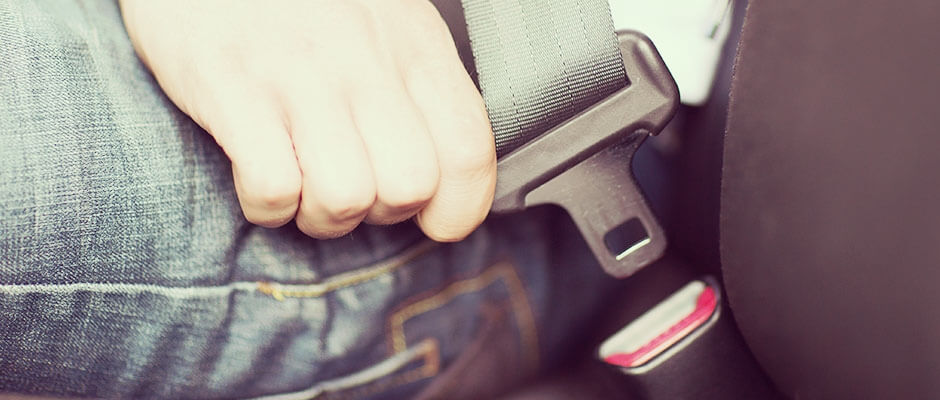Wearing a seat belt is a life saver. Not just wearing yours, but making sure all passengers in your car are wearing theirs too.
Let’s say as the driver you’re being responsible and have yourself buckled in. Something happens, you crash the car and end up being the most injured out of everyone in the car. How? The passenger behind you wasn’t wearing their seat belt, flew through the air propelling you forwards and smashing your face and chest into the steering wheel.
Be a responsible driver
Drivers and passengers aged 17-34 have the lowest seat belt wearing rates combined with the highest accident rates. Rear seat passengers are less likely to wear a seat belt not realising that causes a risk to everyone in the car.
As the driver, take is as your responsibility to make sure everyone in your car is wearing their seat belt before driving off.
Wear your seat belt correctly
It’s important to watch how you wear your seat belt too, so you have the best possible protection in an accident.
You can actually end up injuring yourself badly because of the seat belt. Maybe you’re wearing trousers with a metal button, and you only buckle the seat belt across your stomach. In the impact of a crash the seat belt tightens and the button’s forced inwards rupturing your spleen.
Make sure the belt goes across your lap and the diagonal strap rests securely across your chest and shoulders, not your neck or face, and never place it under your arms or behind your back. Take extra care, if you’re pregnant.
Know the seat belt law
In the UK drivers, and passengers, must wear a seat belt in the front and back of a vehicle (provided one is fitted in the seat you’re using). Drivers caught without a seat belt face on-the-spot fines of £100, and, if prosecuted, can face a fine of up to £500.
You’re only allowed one person in each seat fitted with a seat belt. And children must use the correct car seat for their weight. It’s the driver’s legal responsibility to ensure that any passenger under 14 is using the appropriate child restraint or an adult seat belt.
The only time you don’t need to wear a seat belt is when you’re reversing, or supervising a learner driver who is reversing.
You’re twice as likely to die if you don’t wear a seat belt. Same goes for your passengers. Keep each other safe and buckle up!
